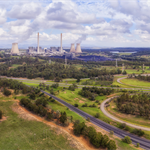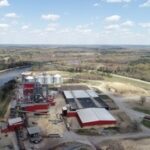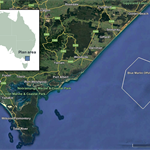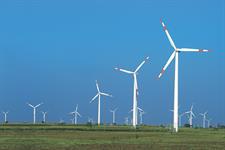Victoria’s offshore projects ‘at risk’ from transmission capacity crunch
Energy Disrupter
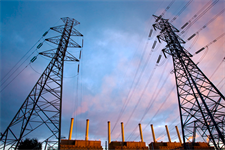
Offshore wind developers can apply for feasibility licences in the Bass Strait off the Victorian Gippsland Coast, after it was declared an official zone for offshore wind development.
Victoria is targeting 2GW of offshore wind capacity by 2032, 4GW by 2035 and 9GW by 2040. The zone has a potential capacity of 75GW, including fixed and floating foundation technology.
Cornwall Insight’s analysis of data from the Australian Energy Market Operator (AEMO), which manages electricity and gas markets across Australia, detailed how a “transfer capacity limitation” will arise when building up to the state’s 2035 and 2040 targets. It found that additional transmission infrastructure is needed to transport the energy generated from the offshore wind resources to onshore load centres.
“Although the Victorian government has a plan and schedule for connecting the offshore wind from the coast to the grid, there is still uncertainty about how the generated energy will be delivered to the load centres,” the analyst said.
AEMO’s latest ‘Input, Assumptions and Scenarios Report’ (IASR) for 2023 has set a transmission limit of 6GW for South East Victoria, to cater for existing coal and gas plants, the Gippsland Renewable Energy Zone (REZ), Basslink, and the proposed Marinus Link.
Cornwall Insights noted that AEMO’s data tallies the existing generators’ installed capacity and the maximum transfer limits of the interconnectors to Tasmania. “However, when the goal for offshore wind capacity is combined with the existing onshore wind in Gippsland (2GW) and total interconnector capacity (around 2GW), the total capacity for 2035 and 2040 will be 8GW and 13GW, respectively, exceeding the 6GW limit,” it warned.
The analysis noted that the South West Victoria area, where offshore wind capacity could also be installed to meet the target, is “already constrained due to expected onshore wind installations and the energy coming from the Heywood Interconnector”. It concluded that an additional 2GW and 7GW of transfer capacity will be required in 2035 and 2040.
“Without a guarantee that the energy generated in Gippsland will be effectively delivered to where it is needed, investment in the area’s offshore wind may be impacted and, with it, the growth of the region’s renewable energy sector,” warned Dominic Pacaba, energy modelling and analytics consultant at Cornwall Insight Australia.
Click here to subscribe to the green hydrogen bulletin to receive fortnightly dedicated news, analysis and comment straight to your inbox.
To submit a news, comment, case study or analysis idea for the green hydrogen bulletin, contact the editorial team.




